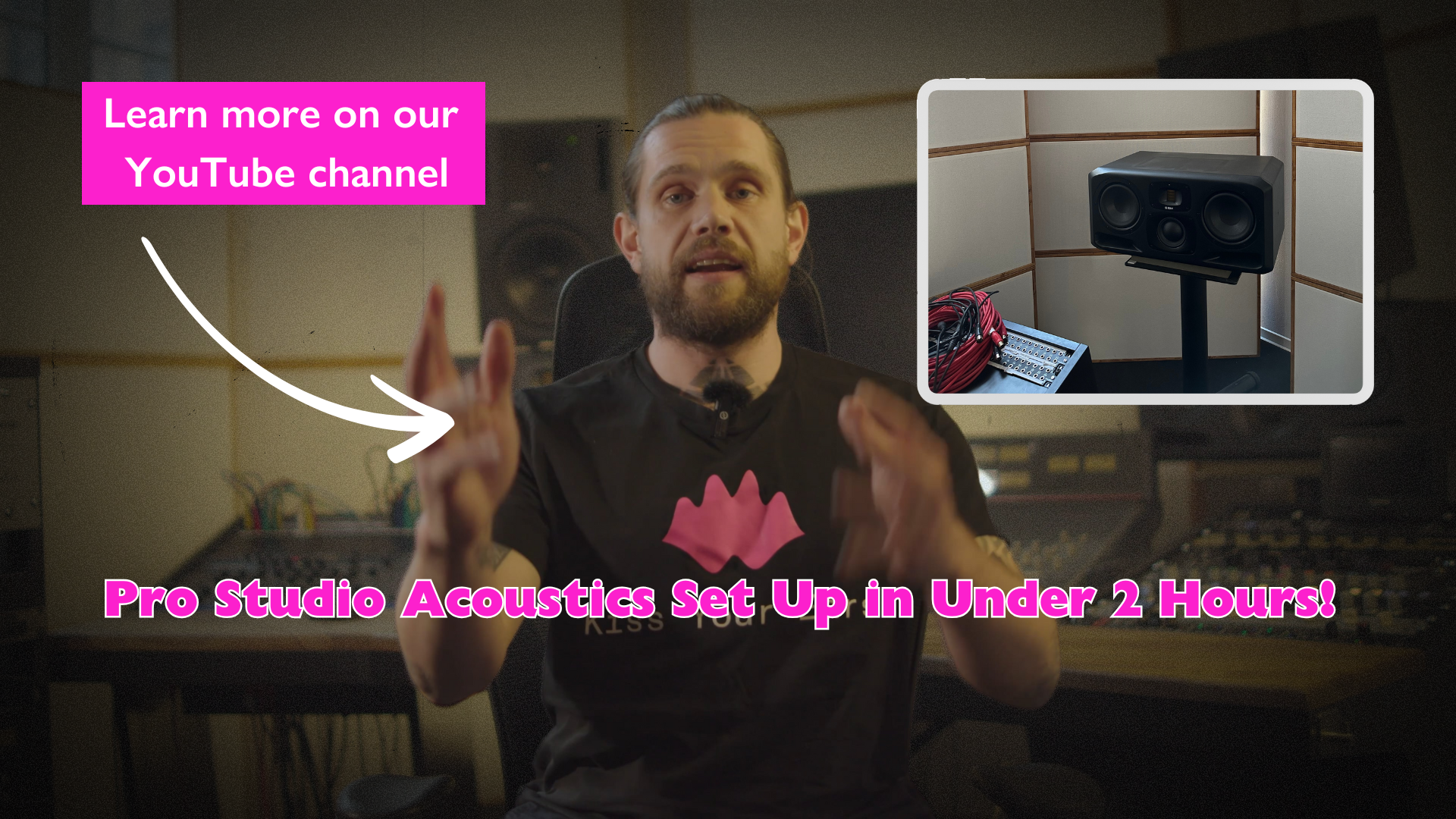How To Set Up Your Surround Sound System
Setting Up a 5:1 Room
When it comes to setting up a listening room, there are many things that hold true between both film production and audio production studios. For example, both rooms are designed to enable engineers and producers to make independent discernations on program material by facilitating an acoustically transparent listening space - a space where they can trust their creative decisions. Setting up your room to make the most of its acoustic properties significantly depends on how you place your listening position and speakers in both film and audio production environments.
Yet the fact that a 5:1 playback system has a greater amount of channels means that there is a bit more work involved in calibrating your set up to optimise its acoustics. This document will base its guidelines on the International Telecommunications Union ITU-R BS. 775 standard, which is the most commonly referenced standard for multichannel sound reproduction.
Your room’s acoustic will depend on these 3 very important criteria:
- The geometry of the room which determines its acoustic properties,
- The positioning and performance of the playback system,
- Localisation of the sweet spot or listening position.
Room size
For the majority of film studios in urban metropolitan areas, it can be quite challenging to overcome the acoustic problems that are inherent in rooms with smaller proportions. For a 5:1 mixing suite, we would strongly suggest that the surface area of your room should be greater than 20 square meters (AES and ITU standards suggest under 30 - 70).
This is because of the physical characteristics of how sound propagates in small spaces. This may include a sparse distribution of low frequency modal content, or comb filtering due to either first reflections or speaker boundary interference. For this reason, it is extremely important to set up your listening position right the first time, and luckily - there are a bunch of free tools and resources to help you do so!
Step 1 - Model your room in a free online acoustics calculator
It’s very easy and it’s free. If your room is box shaped, you can use a free online calculator to predict which frequencies may be problematic, and where their pressure zones may lie. Some acoustic calculators even provide a sine wave function generator which lets you play different frequencies, allowing you to test the model in real time. The following screenshot is a capture from an acoustics calculator called amroc by amcoustics.com:
We can see that there is a strong axial mode which has a pressure build up at the center of the room, causing a disturbance at roughly 61Hz or B1. The effect is that every time you hear the note B1, it may sound uneven to the other notes or frequencies within the room.It may have a longer decay and poorer transient response - sounding muddy and undefined.
From this data, you can start to gain an understanding of the acoustic landscape within your listening space and make notes about which frequencies you may want to target through your room setup. (Unfortunately irregular shaped rooms will have to rely on measurement data to ascertain what the acoustic situation may be like).
Step 2 - Refer to your monitoring guide!
Before proceeding with your speaker set up and placement, please read your documents! Your monitor’s operating manual should describe how your reference monitor loudspeakers should be set up, whether that be vertically or horizontally. (Note: not all monitors are suitable for horizontal placement). It is advised not to play with the room equalisation settings or trimming filters on the back of your speaker until you have exhausted all other options after treatment.
For a 5:1 system, you should make sure that every channel is the same monitor brand and type. This is meant to create coherence between your channels, allowing for smoother mixing and editing.
Step 3 - Loudspeaker placement
So, once you have inspected the details concerning the correct set up of your monitoring system, we can start thinking about where to place them! For a 5:1 system you can refer to the following table:

*Depends on optimal placement either via cancellation or driving mode from a null point. LFE channels may also be flush mounted in optimal cases.

Referencing your placement
The reference listening position is defined as the acoustic center. Your listening position within the room may vary with the base distance of speakers, but pay attention to ensure that it does not put you at 50% of the room's length axis! That is one of the worst positions to be situated. Finding an optimal position may take a little bit of experimentation. On the most basic level, you can use your ears as your measurement apparatus!
Should I put my sweet spot on the width or length axis?
For the majority of cases, your setup will localise the reference listening position along the longest axis of your room. However it is also possible to set up your speakers along the widest axis (depending on what is practical and sounds best).
Try moving yourself backward and forward through the center of the width (or length) axis of your room, while playing either pink noise or a sine function of your problematic frequencies. Using Wes Laschot’s 38% guideline as a starting point, try to mark on the floor where you feel that there is an even distribution of tones, and where you think some may be exaggerated whilst moving back or forth. Ideally you should try to use your listening position as your reference to placing the rest of your monitors.
Base Distance
The base distance between all of your channels should be a minimum of 1.7m to a maximum of 4m. The base distance is the distance of the speaker to your sweet spot position.
Speaker Height
The speaker height should match your ear level height, from the point between the tweeter and woofer of your monitor. Please note that when you tilt your speakers you should be doing so by no more than 15 degrees, and be warned that moving slightly forward or backward will change the frequency response of your listening position.
Surrounding walls
The distance from the speaker to its nearest reflecting surfaces will determine the speaker boundary interference and the comb filtered frequencies of the first reflection points. For a 5:1 system, coherence between the channels can be achieved by having a uniform distance from each speaker to the wall. That means that the distance of your L/R channels to the nearest walls should be the same (or as similar as possible) as the surround channels to their nearest walls.
LFE
Low frequency content is important to cinema, it’s also why subwoofer placement in a 5:1 system is also important to consider. If flush mounting is not an option, you can try to play around with two different methods that target fundamental modes used for subwoofer placement:
- Driving from a null point to attenuate a mode by way of the ¼ wavelength rule.
- Phase cancellation by opposite phase and equal amplitude.
Ideally, you would be using a measurement software to analyse your results in terms of frequency and phase content. However if this is not possible, you can use your ears to find the most linear position. Try to avoid placing your sub in the center, as this tends to excite your strongest axial modes. It’s also important to consider your crossover frequency in these tests!
Step 4 - Getting Precise
Try using a measurement software such as Room EQ Wizard to map the frequency response of each channel using an MLS sequence or logarithmic sweep. In high level mixing suites, there should be less than +- 3dB variation per channel with less than 20 microseconds of delay. Try to find a spot as close as you can to this goal!
Play around with your positioning and the dimensions of your monitors to find the exact position where your Left, Right and Surround channels are closest to each other in terms of phase, frequency and symmetry. The following screenshots are taken from two different measurements taken in a 14m² room (quite small - yet standard for most urban spaces):

Pay attention to the dip at 150Hz. Both Speakers were positioned 52cm to the front wall, and 80cm from the side wall, with a base distance of roughly 1.45m.
Better:

Notice how the dip at 150Hz completely disappears and the two lines mirror each other in more detail, and that’s without any treatment!!!! Both speakers were moved to a distance of 37cm from the front wall and 51cm from the side walls, with a base distance of roughly 1.9m. For a 5:1 system, you would ideally be aiming to have all 5 channels mirror each other as closely as possible in terms of their frequency and amplitude response.
Step 5 - Furnishings
The last step should be to bring in your furniture and studio equipment such as mixing consoles, monitors and other gear. If you want to get nitpicky, you could make another measurement to see if your desk or other equipment could be leading to comb filtering through reflections.
Step 6 - Treatment
Once you are confident with your monitoring and listening position, you will be in a good position to proceed with the installation of your treatment. A 5:1 system is going to need a lot more treatment and coverage over a larger surface area than a stereo system, as the effective size of the first reflecting points and areas are much larger than in a stereo system.
If you get it right the first time, you can rest assured that you have exhausted all possibilities and know that your current listening position is the best spot in the room.






